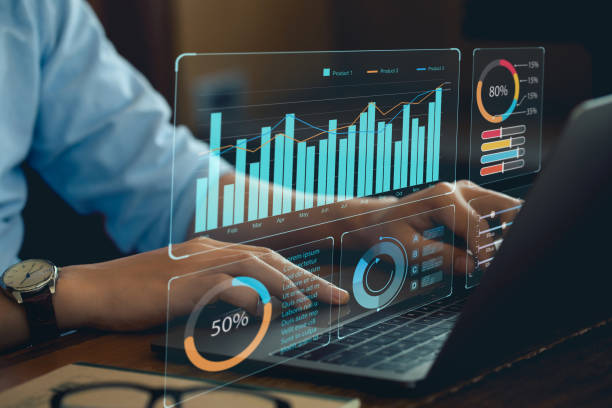Performance Data: A Brief Overview
Performance data refers to the quantitative and qualitative information that reflects the effectiveness, efficiency, and overall outcomes of an organization’s activities. 1 This data is crucial for making informed decisions, identifying areas for improvement, and measuring progress towards strategic goals.
Types of Performance Data
- Quantitative Data: Numerical data that can be measured and analyzed statistically.
- Examples: sales figures, customer satisfaction ratings, employee turnover rates, financial metrics, productivity metrics.
- Qualitative Data: Non-numerical data that provides insights into subjective experiences and opinions.
- Examples: customer feedback, employee surveys, interview transcripts, case studies.
Uses of Performance Data
- Measuring Performance: Assessing individual, team, and organizational performance against established goals and standards.
- Identifying Trends: Recognizing patterns and trends to predict future outcomes.
- Making Informed Decisions: Using data to support decision-making processes.
- Improving Performance: Identifying areas for improvement and implementing corrective actions.
- Recognizing and Rewarding Performance: Acknowledging and rewarding outstanding performance.
- Strategic Planning: Using performance data to inform future strategies and goals.
Key Considerations for Performance Data
- Data Quality: Ensure data accuracy, reliability, and validity.
- Data Security: Protect sensitive data from unauthorized access and breaches.
- Data Privacy: Comply with data privacy regulations and ethical guidelines.
- Data Analysis: Use appropriate statistical techniques to analyze data and extract meaningful insights.
- Data Visualization: Present data in clear and visually appealing formats to facilitate understanding.

In today’s competitive business landscape, using performance data to predict future trends is not just an advantage—it’s essential for success. By analyzing past performance and understanding emerging patterns, companies can make informed decisions that help drive growth, mitigate risks, and stay ahead of the competition. This article explores how to leverage performance data effectively to predict future trends and enhance decision-making.
1. Collect Relevant Performance Data
The first step to predicting future trends is to ensure that you’re collecting the right kind of performance data. This can include both quantitative and qualitative data related to various aspects of your business, such as:
- Sales Data: Track sales figures over time to identify growth patterns or seasonal fluctuations.
- Customer Feedback: Gather insights from customer satisfaction surveys, reviews, or support tickets.
- Employee Performance: Use employee productivity metrics, engagement scores, and turnover rates.
- Financial Metrics: Monitor key financial data like revenue, profit margins, and cost structure.
Tip: It’s crucial to collect data across multiple touchpoints—internal performance, market trends, and customer behavior—so that you can create a comprehensive picture of how your business is performing.
2. Analyze Historical Trends
Once you have sufficient data, analyze it to spot historical trends. Look for recurring patterns, seasonal shifts, and other notable changes over time.
- Seasonal Fluctuations: If you notice certain products or services perform better during specific months or quarters, this indicates predictable cycles.
- Growth or Decline Patterns: Track long-term performance trends to identify periods of growth or decline, which could signal broader market movements.
- Emerging Customer Needs: Customer feedback and purchasing behaviors over time may reveal changing demands or unmet needs, pointing to new opportunities.
Example: If sales of a particular product have steadily increased every holiday season, you can use this trend to predict higher demand in the future and prepare your inventory accordingly.
3. Use Predictive Analytics Tools
Predictive analytics leverages statistical algorithms and machine learning models to analyze historical data and forecast future trends. By implementing predictive analytics tools, you can make data-driven predictions based on past performance.
- Forecasting: These tools allow you to forecast future sales, revenue, or demand, enabling you to plan accordingly.
- Customer Behavior Predictions: Predictive models can also be used to forecast customer behaviors, like churn rates, repeat purchases, or engagement patterns.
- Trend Detection: Predictive analytics helps you identify emerging trends before they become widely recognized, giving your business a competitive edge.
Tip: Software tools like Google Analytics, Microsoft Power BI, or specialized CRM systems often have built-in predictive analytics capabilities that can make the process easier and more accessible.
4. Implement KPI Dashboards
Key Performance Indicators (KPIs) are essential for measuring business success. By setting up a centralized KPI dashboard, you can continuously monitor and assess your organization’s performance against predefined metrics.
- Real-Time Monitoring: Dashboards give you immediate insights into performance, allowing you to spot issues or opportunities as they arise.
- Trend Visualization: Visual representations of your KPIs—such as line graphs, bar charts, or heat maps—can help you spot upward or downward trends more easily.
- Data Segmentation: Segmenting data by time periods, regions, customer groups, etc., allows you to get more granular insights and tailor your predictions.
Example: A retail company can use a dashboard to track daily sales, customer acquisition rates, and inventory turnover, enabling them to predict demand and adjust marketing efforts in real-time.
5. Monitor External Market Factors
While internal performance data is vital, understanding the broader market landscape is crucial for accurate trend prediction. External factors can significantly impact your business’s performance and help inform better decisions.
- Economic Indicators: Keep an eye on economic trends such as interest rates, inflation, and employment rates. These indicators can affect consumer spending and business operations.
- Industry Trends: Stay updated on trends within your specific industry by reading reports, attending conferences, and engaging with thought leaders.
- Competitor Performance: Monitor competitors to identify shifts in their strategies or performance, which might signal market changes.
Example: If you notice a rising trend in eco-conscious consumer behavior, your business may want to shift towards sustainable product offerings or marketing campaigns to stay ahead of the curve.
6. Make Data-Driven Business Decisions
Once you’ve gathered and analyzed relevant data, use the insights to make informed, data-driven decisions.
- Strategic Planning: Predictive insights can guide your long-term business strategies, whether it’s expanding into new markets or launching new products.
- Resource Allocation: By identifying high-performing areas or underperforming sectors, you can allocate resources more effectively.
- Risk Management: Use historical data to anticipate potential risks and take proactive steps to mitigate them.
Example: If performance data shows an increasing trend in customer complaints about delivery delays, you might invest in improving your supply chain operations to prevent churn and maintain customer satisfaction.
7. Continuously Evaluate and Adjust
The key to successfully predicting trends and making decisions is continuous evaluation. As market conditions and business environments change, so should your data analysis and predictions.
- Feedback Loops: Create systems to regularly collect feedback and update your predictive models based on new data and changing circumstances.
- Adapt to New Trends: As new technologies and trends emerge, integrate them into your predictive models to stay relevant.
Pro Tip: Use A/B testing and pilot programs to experiment with different strategies before rolling out large-scale changes based on predictions.
8. Foster a Data-Driven Culture
For your business to consistently use performance data to predict trends, it’s important to foster a culture of data-driven decision-making. Encourage employees at all levels to understand the value of data and use it to inform their decisions.
- Employee Training: Ensure employees are trained on how to collect and interpret performance data effectively.
- Empower Teams: Give teams the autonomy to act on data insights, empowering them to make decisions that align with the company’s strategic goals.
Example: A marketing team might use performance data to optimize campaigns in real time, allowing them to adjust messaging, targeting, or budgets based on emerging trends.
Conclusion
Using performance data to predict future trends and make informed business decisions is a critical strategy for staying ahead in any industry. By collecting the right data, analyzing historical trends, utilizing predictive analytics, and continuously evaluating progress, businesses can confidently navigate the future. The insights gained from performance data help organizations make proactive decisions that enhance efficiency, mitigate risks, and drive growth.

